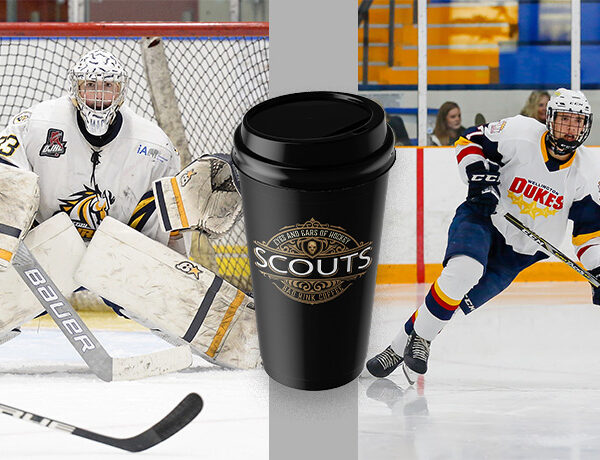In this series on amateur hockey scouting, we compiled responses from 20 different hockey scouts and coaches that scout representing NHL, OHL, CJHL and NCAA teams about their unique job. Many wished to remain anonymous, which we allowed in order to get more candid responses to our questions.
These hockey scouts come from varying backgrounds, ranging from former players — from the NHL, junior and college ranks — to former coaches, including some with limited hockey playing experience. Believe it or not, there is even a former referee. Some have been a hockey scout for over 30 years and others only a couple.

As mentioned in another story in this series on hockey scouts, much of the desired skills and attributes in a hockey player are built around team objectives, needs and biases. In general, most scouts will provide the cliché answers — speed, agility, compete level, hockey IQ, size, positional understanding, creativity, athleticism, aggression, physicality, hockey sense, maturity and decision making.
What is interesting is the negative things that the scouts said they looked for as well as other attributes that were unusual.
A number of scouts spoke to the attributes of mobility and patience with defenceman. The ability to utilize their edges and escape to make plays and create zone exits is critical to the modern defenceman.
Another interesting theme was the discussion of size in goaltenders. On average NHL goalie are 6-foot-2. A premium has been placed on size in recent years due to the amount of traffic in front of the net in today’s hockey. Despite these statements, no goalie over 6-foot-5 has ever won a Stanley Cup.
Technical understanding of the position is important and a number of scouts discussed the preference of athletic goalies as opposed to “shot blockers” who often lack the athleticism to make adjustments.
The one point that really resonated consistently was the topic of body language and negative team behaviour. This was the one trait that most scouts drew a line on.
“Character and the ability to be a team player is paramount,” one scout said. “If we do not draft good people, we do not create a winning culture within our organization.”
Body language is perhaps one of the biggest indicators of this intangible.
“We watched a couple of first-round kids fall into the second round because of bad body language and questions around their character,” one OHL scout mentioned. “If a player pouts or slams his stick on the way to the bench, it draws into question not only his character but his mental toughness. “
NCAA scouts have very similar tasks but their roles are quite unique in that they must manage their duties as associate coaches as well as act as primary scouts. The NCAA does not allow teams to utilize outside scouts to ensure integrity and fair play. Most of the NCAA coaches shared similar thoughts about desired skill sets, character and attributes as the other scouts. The one difference was the focus on academics.
“Obviously we need good students,” one NCAA scout said. “Thats a given. If the player is not a good student they will have difficulties managing the workload of being a student athlete.”
Amateur Hockey Scouting
Prepskills will be holding its annual U.S. College Expo to help explain educational requirements for hockey players attending U.S. colleges.
Team Canada member and three-time Olympian Gillian Apps shares her reasons for choosing to attend university in the United States.
Good communication within an organization can make it easier for a hockey scout to spot specific skills a team is looking for in a player.
After a non-season because of COVID, there will be a lot of guesswork in the OHL Draft which is also creating more opportunities for players.
There are several hockey showcase events for U16 players in Ontario but the best way to get noticed at any age is consistent, high-level play.
Hockey scouts look for negative attributes such as body language and questions about a player’s character when evaluating talent.
Hockey scouts discuss the differences between the Canadian Hockey League and NCAA as options for young Canadian hockey players.
Hockey scouts preach patience when it comes to giving advice to hockey parents and stress that players all develop at different rates.
There are several factors a young player must look at when selecting a hockey agent according to Panthers Assistant GM Brett Peterson










